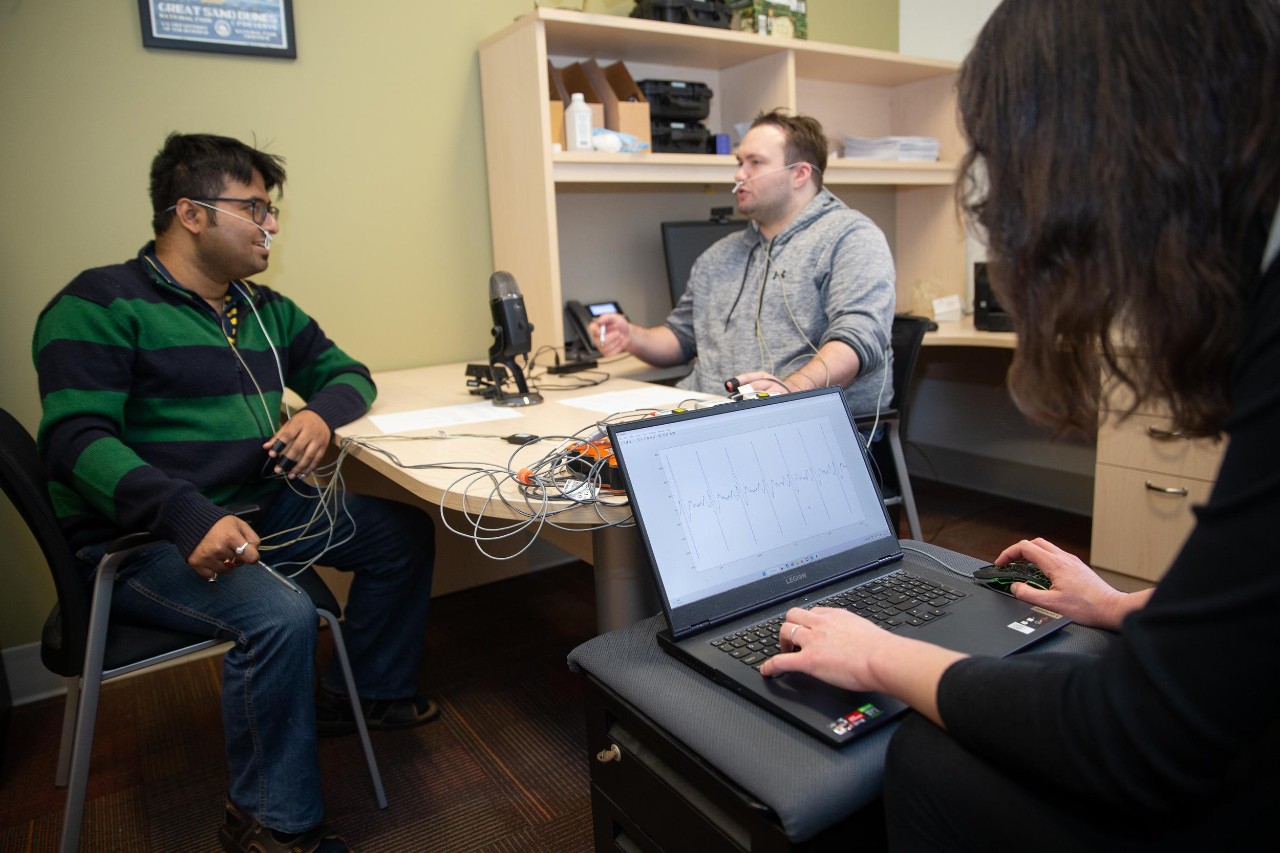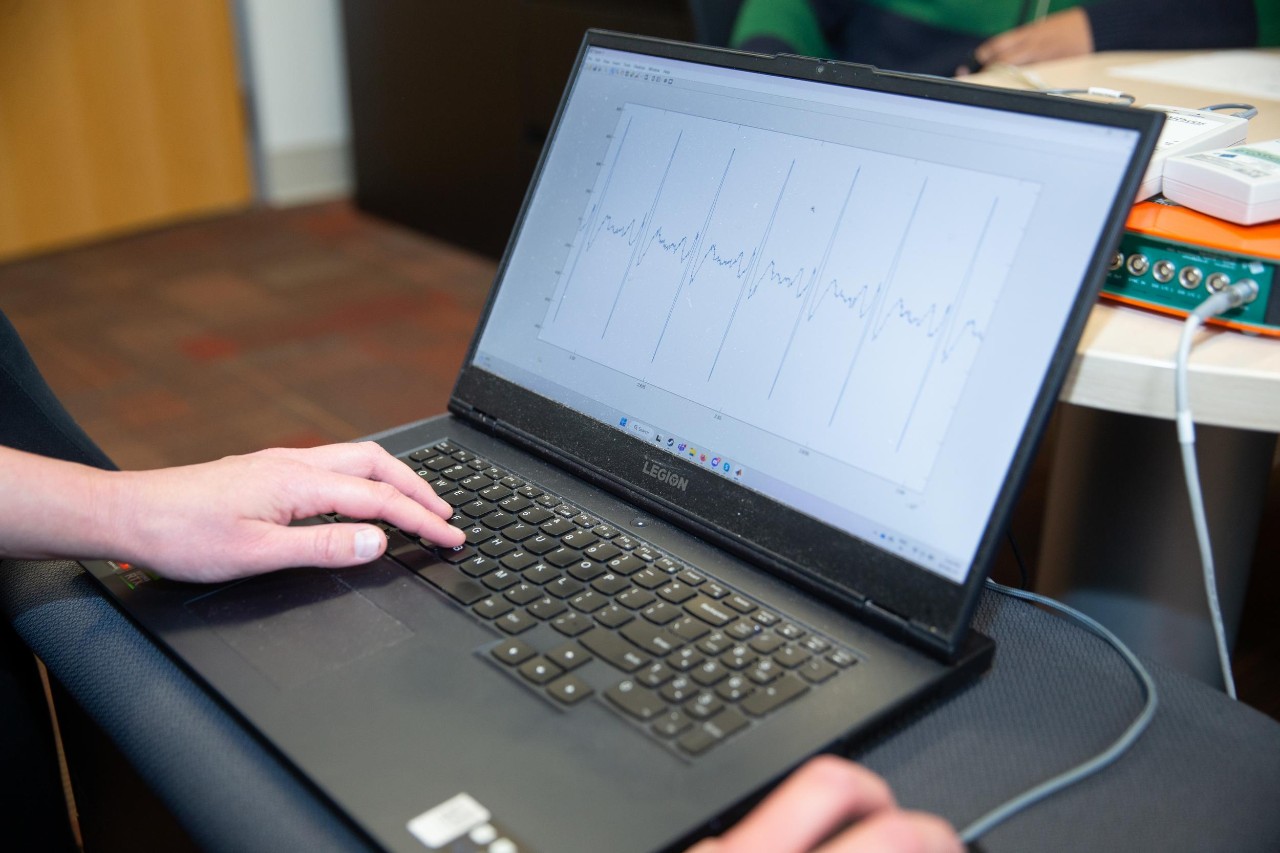
WFXB FOX: Computer can tell if you're a match
UC trained a computer to identify types of conversations based on the participants' physiology
WFXB Fox-TV highlighted research by engineers at the University of Cincinnati who taught a computer to recognize types of conversations based on the participants' physiology alone.
Researchers studied a phenomenon in which people’s heart rates, respiration and other autonomic nervous system responses become synchronized when they talk or collaborate. Known as physiological synchrony, this effect is stronger when two people engage deeply in a conversation or cooperate closely on a task.
In experiments with human participants, the computer was able to differentiate four conversation scenarios with as much as 75% accuracy. The study is one of the first of its kind to train artificial intelligence how to recognize aspects of a conversation based on the participants’ physiology alone.
The study was published in the journal IEEE Transactions on Affective Computing.
Lead author and UC doctoral student Iman Chatterjee said a computer could give you honest feedback about your date — or yourself.
“The computer could tell if you’re a bore,” Chatterjee said. “A modified version of our system could measure the level of interest a person is taking in the conversation, how compatible the two of you are and how engaged the other person is in the conversation.”
UC Associate Professor Vesna Novak said this field of affective computing could provide feedback to educators, therapists or other people who want to understand what's really going on in interpersonal dynamics.
Featured image at top: UC engineering students connected to sensors have a conversation while UC Associate Professor Vesna Novak monitors their physiological responses on a computer. Photo/Andrew Higely/UC Marketing + Brand
More UC engineering in the news

A computer screen shows the physiological responses of a person engaged in conversation. Photo/Andrew Higley/UC Marketing + Brand
- Jerusalem Post: New app can tell if you're a match
- Science Daily: Smash or Pass? This computer can tell
- India AI: Is your date a 'smash' or 'pass?'
- Gadzetomania (Poland): This computer can tell if you're a match
Related Stories
UC Research Ranking Climbs
January 10, 2002
The University of Cincinnati moved up in two different national rankings established by the National Science Foundation (NSF) to compare college and university research efforts.
Three of Four UC Fulbrights Scholars from McMicken
January 28, 2002
Tainted water supplies in Bangladesh, international security and missile defense, transformations in Mexico and greater understanding of India - this varied list sums up the work of four Fulbright Scholars at the University of Cincinnati who are concentrating on real-life issues involving our neighbors around the world.
Celebrating CAS' Deep Roots in Cincinnati
November 11, 2002
UC s College of Applied Science (CAS) is set to celebrate its rich heritage as the quiet cornerstone upon which Cincinnati industry, learning and culture has built itself since the school s founding on Nov. 20, 1828. The school was founded as the Ohio Mechanics Institute, the first school dedicated to technical education west of the Alleghenies. On Wednesday, Nov. 20, the college will toast its birth with a Founder s Day reception from 4:30-6:30 p.m. in the first floor of the CAS Administration Building, 2220 Victory Parkway.
